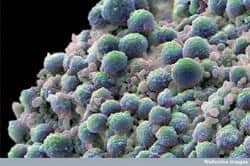
Cancer is a major reason for deaths worldwide. It leads to more deaths when compared with AIDS, tuberculosis and malaria. Deaths from cancer globally are forecasted to continue to increase to over 11 million in 2030.
A cell is the tiniest structural and functional component in our bodies. Typically, cells grow and split to create fresh cells. As soon as these cells become aged or damaged, they expire and are replaced with fresh cells. This procedure is managed by genes. However in some cases, this organized process doesn’t occur. Aged and weakened cells don’t expire and fresh cells go on splitting, even if one’s body doesn’t need them. Because of this, a mass of tissues known as a tumor or lump is created within the body.
A tumor is either benign (harmless) or malignant (cancerous). The uncontrollable capability of a cell to grow and interfere with other tissues makes a cell a cancer cell. In many instances, these defective cells form a tumor; however, in a few other cases like leukemia, there may not be any kind of tumor.
Noncancerous tumors generally expand gradually and don’t disperse to other areas of the body, while malignant tumors expand more quickly and interfere with adjacent body parts or spread to other bodily organs.
How a Normal Cell Becomes an Abnormal Cell
Studies have indicated that cancer is a result of destruction of the genes that handle cell division and expansion. Most cancers are hereditary since it is due to defective genes. Gene damage may be the consequence of the interactions between an individual’s genetic factors, or may be the result of external elements: physical agents, like ultraviolet rays of the sun; chemical agents, such as cigarette smoke; and biological agents, like infections from viruses and bacteria.
Aging is an additional factor for the progression of this type of condition. The risk of acquiring cancer increases significantly as we grow older.
How Cancer Spreads
Classification of Cancer
Cancer cells are divided into two classifications: primary and secondary cancers. The location exactly where the cancer started is the primary classification. Once this primary cancer cell splits and is transported to additional parts of the body, it’s called secondary cancer, or metastatic. For instance, a malignant breast tumor may propagate to the liver — then, it’s referred to as metastatic breast tumor; it has metastasized to the liver. Metastatic or secondary cancers include original cells from the primary site.
Types of Cancer
There are various types of cancers. The following are a few of the typical types:
Source: www.universalteacher.com